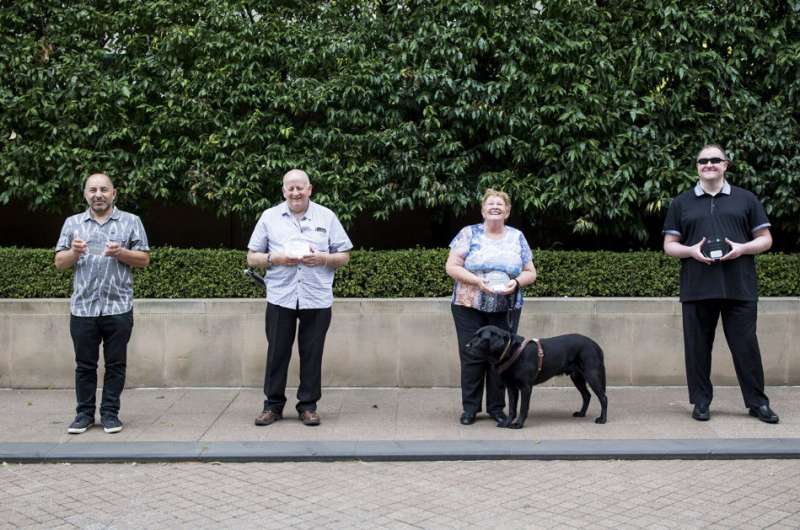This article has been reviewed according to Science X's editorial process and policies. Editors have highlighted the following attributes while ensuring the content's credibility:
fact-checked
proofread
Bionic eye trial reveals substantial vision improvements over 2.5 years

Results of the first clinical trial of Australia's second-generation bionic eye have demonstrated 'substantial improvement' in four participants' functional vision, daily activities and quality of life over a period of more than two and a half years.
Detailed outcomes from the trial, led by the Center for Eye Research Australia, Bionics Institute, University of Melbourne and Royal Victorian Eye and Ear Hospital, are published in Ophthalmology Science.
The findings add to interim results which showed that the second-generation bionic eye developed by Australian company Bionic Vision Technologies provided rapid improvements for four patients with blindness caused the genetic eye condition retinitis pigmentosa.
Retinitis pigmentosa is an inherited retinal disease which affects about two million people worldwide and is one of the leading causes of vision loss in working-age people.
The bionic eye comprises an electrode array, designed by the Bionics Institute and the Center for Eye Research Australia, that is surgically implanted behind the eye. The electrode receives signals from a video camera mounted on glasses, which stimulate the patient's retina.
Professor James Fallon, Head of Research at the Bionics Institute said, "The camera converts images into electrical pulses delivered by the electrode array that activate retinal cells and create flashes of light called phosphenes to help patients detect edges, shapes and movement."'
The new study tracked the patients from the time they received the implant surgery in 2018 to 2021. Its findings demonstrate the device is stable and durable over the longer term—staying in place behind the retina without complication and still having 97 percent of electrodes functioning 2.7 years after first implant.
Principal Investigator and vitreo-retinal surgeon Associate Professor Penny Allen said patients showed significant improvement in their navigation, mobility and ability to detect objects—in clinical tests, at home and in the community.
"The bionic eye enabled blind patients to locate doorways, avoid obstacles and find items on table-tops," she said. "They reported greater confidence in navigation, were more likely to explore new environments and had reduced need for assistance when traveling to the local shops."'
Associate Professor Allen said participants reported that the bionic eye supplemented long cane and guide dog use, provided safe navigation around people and obstacles, and allowed them to detect waypoints such as trees and lamp posts along navigational routes. "Patients were also able to locate their spouse in a café and detect people moving at a train station—things they could not do without using their bionic eye."'
Bionic Vision Technologies' team is continuing to refine the vision processing capabilities, usability, as well as the wearables of the bionic eye system.
Dr. Ash Attia, CEO of Bionic Vision Technologies said, " We are encouraged by the excellent results of the Generation 2 Bionic eye trial. We are looking forward to finalize the development of the Generation 3 bionic eye and enter the worldwide pivotal trial and ultimately gain regulatory approval. Regulatory approval will allow us to make this important technology available to RP patients which will positively impact their lives."
More information: Matthew A. Petoe et al, A Second-Generation (44-Channel) Suprachoroidal Retinal Prosthesis: A Single-Arm Clinical Trial of Feasibility, Ophthalmology Science (2024). DOI: 10.1016/j.xops.2024.100525



















